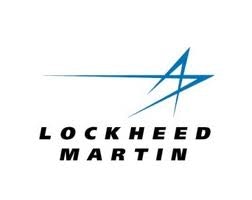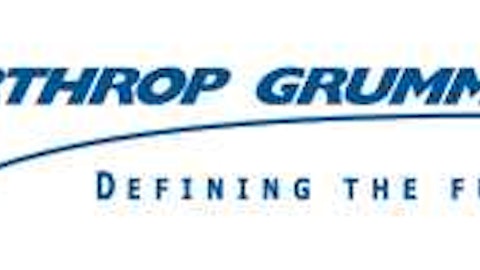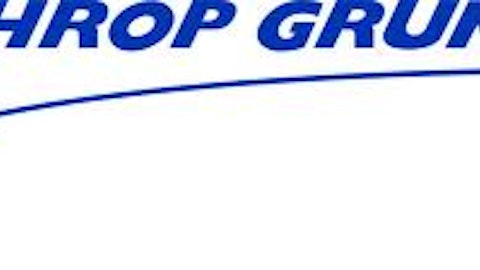Due to the Budget Control Act of 2011, more commonly known as sequestration, military spending is declining. Despite this decline, U.S. defense-related spending is well above $1 trillion with all of the largest programs having material accounting weaknesses according to their auditors. The three largest defense-related areas in the U.S. budget are:
- Department of Defense, or DoD – $574 billion in fiscal 2013 (including sequestration of $40 billion);
- Veterans spending – $140 billion;
- Homeland security – $55 billion.

Costs
As seen from the table below, Lockheed Martin Corporation (NYSE:LMT), General Dynamics Corporation (NYSE:GD) and Raytheon Company (NYSE:RTN) are improving their margins, while their sales are stagnant or declining. Also, the earnings per share are significantly better for Lockheed Martin Corporation (NYSE:LMT) and Raytheon due to their improved profitability and share buybacks (discussed later). In terms of employees, all three companies are reducing the number of their employees with the trend continuing into 2013. In addition, as these companies expand into emerging markets, it is likely that their dependence on the U.S. workforce will decline.
Spending on research and development is little changed from year to year among the three companies. The basics of flying a fighter jet or intercepting a missile do not change that much. A large portion of each company’s research and development, usually for more advanced technologies, is included in the cost of each contract with the DoD.
In addition to controlling labor and direct research and development costs well, each company is actively improving its other operations. For example, Lockheed Martin Corporation (NYSE:LMT) is working in a partnership with Northrop Grumman on a number of missiles and radars under a jointly held company, Longbow. Also, Lockheed Martin Corporation (NYSE:LMT) and Raytheon have teamed up to provide low-cost counter-rocket defense options. These partnerships allow each company to access the other ones knowledge and experience without investing individually in developing them on their own.
In addition, Lockheed Martin Corporation (NYSE:LMT) runs an independent innovation team, with a more flexible budget but more clear results, under the Skunk Works name. And General Dynamics Corporation (NYSE:GD) recently consolidated its OTS (ordinance and tactical systems) and ATP (armament and technical products) businesses into one division, while Raytheon consolidated its operations from six to four segments.
| LMT | GD | RTN | |
| Operating margin Q2 ’13 vs. Q2 ’12 | 11.4% vs. 10% | 12.2% vs. 12.1% | 12.5% vs. 12.4% |
| Earnings per share Q2 ’13 vs. Q2 ’12 | $2.64 vs. $2.38 | $1.77 vs. $1.81 | $1.50 vs. $1.41 |
| Sales Q2 ’13 vs. Q2 ’12 | $11.4B vs. 11.9 | $7.9B vs. 7.9 | $6.1B vs. 6.0 |
| Employees at the end of ’12 vs. ’11 | 120K vs. 123K | 92.2K vs. 95.1K | 67.8K vs. 71K |
| R&D % of revenues ’12 vs. ’11* | 1.3% vs. 1.3% | 1.7% vs. 1.7% | 2.9% vs. 2.5% |
* Company-sponsored. Source: SEC filings.
Driven by international and commercial advances
International sales are rising among the three companies (as well as non-defense sales). Lockheed Martin generated 17% of its 2012 sales from international sources and its goal is this number to reach 20% by the end of 2013. Similarly, General Dynamics Corporation (NYSE:GD) derived 21% from international sources (8% defense and 13% commercial) in 2012 up from 19% in 2011. And finally, Raytheon international sales in the first half of 2013 were 27% up from 25% during the same period in 2012.
While the three companies are expanding their international sales, they are also betting on increased revenues from commercial sources, both domestic and international. Latest examples include Lockheed Martin’s entry into providing liquified natural gas tanks for storage and transportation to the oil and gas industry. General Dynamics Corporation (NYSE:GD) is increasing delivery of the Gulfstream aircraft, and Raytheon has taken a pioneering role in public safety communication by leading the transitioning from LMR (land-mobile radio) to the LTE (long-term evolution) standard.
Share buybacks
Due to their cash generating abilities, all three companies have significant amount of cash on their balance sheets and return cash in the form of dividends and share buybacks. During the last two quarters, Lockheed Martin, General Dynamics Corporation (NYSE:GD), and Raytheon bought back shares worth $926 million, $585, and $450 million, respectively, and had cash reserves as of the last quarter end of $2.9 billion, $3.8 billion, and $3.5 billion, respectively. All three companies have significant amounts left on their share buyback authorization plans, and buyback activity for the second half of 2013 should remain strong.
Conclusion
Lockheed Martin, General Dynamics, and Raytheon trade at 2013 estimated price-to-earnings ratios of 12.9, 12.6, and 13.1, respectively. This is favorable to a 2013 estimated price-to-earnings ratio for the S&P 500 of 15.6. Also, their dividend yields (ranging from 2.6% to 3.8%) are more attractive than that of the average S&P 500 member. General Dynamics has the largest exposure to the army (the part of DoD seeing the largest budget cuts) followed by Raytheon and Lockheed. On the other hand, Raytheon has the largest portion of its sales from international sources and it has the leanest workforce. This makes Raytheon a slightly better investment, followed by Lockheed Martin and General Dynamics.
The U.S. as well as many other countries are likely to continue spending large portions of their budgets on defense. While sales growth might be slowing or reversing due to sequestration, the three companies discussed above have many levers that they can pull to offset this trend. The strong share price performance of Lockheed Martin, General Dynamics and Raytheon should continue due to their ability to reduce labor costs, streamline operations and increase international and commercial sales and their solid balance sheets, which allows for share repurchases and competitive dividends.
Tax increases that took effect at the beginning of 2013 affected nearly every American taxpayer. But with the right planning, you can take steps to take control of your taxes and potentially even lower your tax bill.
The article Three Military Giants Poised to Overcome Sequestration originally appeared on Fool.com and is written by Delian Naydenov.
Delian Naydenov has no position in any stocks mentioned. The Motley Fool owns shares of General Dynamics, Lockheed Martin, and Raytheon Company. Delian is a member of The Motley Fool Blog Network — entries represent the personal opinion of the blogger and are not formally edited.
Copyright © 1995 – 2013 The Motley Fool, LLC. All rights reserved. The Motley Fool has a disclosure policy.




